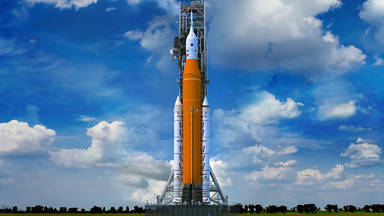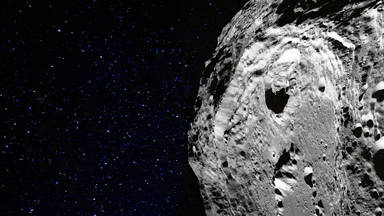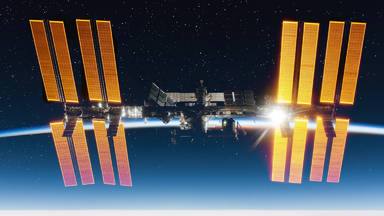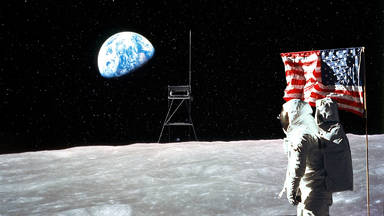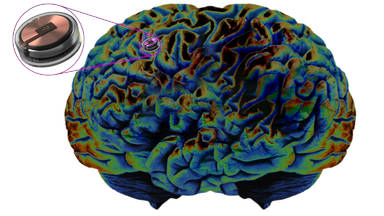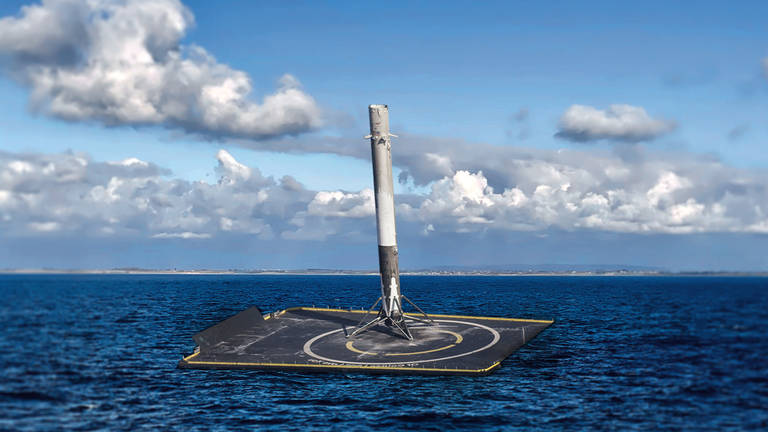
During SpaceX booster landings, we are able to witness a massive cylinder gracefully land on an extremely precise landing site. Over the years you may have noticed that SpaceX often lands with boosters on a drone ship in the middle of the Atlantic ocean. While this makes the entire process look even cooler, why in the world would they actually do this?
Starting off, landing in the middle of the ocean is no doubt inconvenient. After all, you have to log back a massive booster hundreds of miles, just to get it back to the coast. If SpaceX simply landed all of their boosters back at the launch site (as they sometimes do,) they could save millions every year on transport costs. Moreover, the ocean surface isn't nearly as stable as land. Thus, making it much more likely that the booster will encounter problems during landing.
Despite all of this, SpaceX continues to land their boosters in the ocean. Safety concerns for people around the landing site does play a role in this decision, but the choice actually has less to do with cost convenience and safety, and more to do with physics.
Getting a payload into orbit has little to do with upward velocity. The key to achieving orbit is actually horizontal velocity. The boundary for space, which is marked by the Kármán line, is only 100 kilometers in altitude. So there is really no reason for a Falcon 9 to be traveling at over 30,000 kilometers per hour if reaching 100 kilometers in altitude was all that was necessary. The high-speed is there to ensure that the rocket ship actually stays in space.
A popular misconception is that there is no gravity once you reach space, and that this is the reason that astronauts experience weightlessness. But this is completely false.
Just think about it, we all know that tides are caused by both the sun and the moon's gravitational forces, acting on bodies of water on earth. The sun is absolutely massive and you can fit roughly 1 million Earths inside the Sun. As a result, the sun's gravity is 27.9 times that of the earth. So it makes sense that the sun affects tides on the earth, but what about the moon?
The moon is only a quarter of the size of the earth, and its gravitational force is only one-sixth of the earth. On top of this, the moon is 384,400 kilometers away from the earth. That's 30 earths away. So, if the moon is able to affect tides on the earth, you would think that earth's gravitational force would affect a rocket ship that's only a few hundred kilometers in space. And it does in fact.
The gravitational force of earth in low earth orbit is almost the same as the gravitational force on the surface of the earth, but then why do astronauts experience weightlessness? Well this can be explained by perpetual falling.
In fact, astronauts aren't floating in space. They're actually continuously falling at tens of thousands of kilometers per hour. Imagine skydiving from an airplane, for instance, if there was no atmosphere, you wouldn't feel the air molecules colliding with your body at high-speeds. In other words, there would be no drag force.
In such a scenario, skydiving wouldn't feel like falling. It would actually feel like floating. As we all know, there is no atmosphere in space. Thus, when astronauts are constantly falling towards the earth, it feels and looks like they're floating.
This brings up another concern. if astronauts are just constantly falling towards the surface of the earth, wouldn't they eventually reach the surface? Well, this is where their massive horizontal velocity comes into play. As we just discussed, once rockets cut through the atmosphere, they travel horizontally, not vertically. Now think about how you would draw a big circle around a smaller circle? You draw a line at a constant speed, that is slowly curving towards the center of the smaller circle. At any point, the direction of the pencil's tip is parallel to the surface of the smaller circle. However, the change in direction between any two points is directly towards the center of the circle. This is the same principle that orbiting rockets, or satellites use. The rocket is simply traveling horizontally at a constant speed. The gravitational force, however, causes the trajectory of the rocket to bend towards the surface of the earth and create a circle.
Hopefully, all that made sense. But what does all of this even have to do with landing in the ocean? Well, when the booster separates from the rocket, the rocket is traveling at about 7,800 kilometers per hour, and this is almost fully horizontal velocity. So, for the booster to return to the launch site, it would have to cancel out all the horizontal velocity in the positive X direction and start traveling in the negative X direction as we slow down and change directions.
But there is a major problem. The only reason rockets are able to orbit the earth without falling to the surface is because they are traveling so fast in the positive X direction. When you start to slow down, you're going to start losing altitude very fast. Thus, the rocket booster will not only have to use its engines to change direction, but it will also have to work on maintaining altitude so that it doesn't fall and explode. Considering this, it is going to take significantly more fuel for a rocket to actually return to its launch site, which would of course cost a lot of money.
But it is really not a matter of cost, you're actually facing a much larger physics problem once again. Whenever you add fuel to a rocket, you need to make the fuel tank (and the rocket itself,) bigger. However, making the rocket bigger and adding fuel to rocket adds mass to the rocket. As a result, you'll have to add even more fuel (and fuel capacity,) to allow the rocket to carry the original fuel you added. In the case of returning to the launch site, the math doesn't really work out that well. In many cases you'll end up infinitely adding more fuel and fuel capacity to cover the previous fuel and fuel capacity you added.
If you really really want to land at the launch site for some reason, there are a couple of solutions. For example, you could just travel all the way around the earth and come back and land at the same place. This is what the space shuttle did for decades. Or you could feel the booster in space, or somewhere during its flight. Lastly, you can choose to launch a very light payload, which SpaceX does sometimes do. But as you can see, these solutions aren't very meaningful when you're just trying to land a booster.


